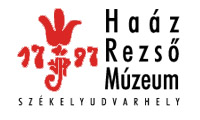Kovács Petronella (szerk.): Isis - Erdélyi magyar restaurátor füzetek 8-9. (Székelyudvarhely, 2009)
Puskás Éva: A Szatmári Római Katolikus Egyhámegye kulturális javaainak megmentése
Márta Kissné Bendefy Effect of fats, oils and lubricants on leathers It is commonly thought that leather objects can best be preserved with regular application of fats, oils and lubricants. The study discusses the purpose of the application of lubricants during the production and the use of leather. It reviews the types of lubricants applied during production and use (triglycerides, fatty acids, modified triglyceride oils, fatty alcohols, mineral products, synthetic oils, fat liquors). It describes their chemical composition, characteristic properties and their effect on leather. It discusses in details the types of deteriorations caused by fats, and their manifestations on leather. They are the followings: desiccation caused by water displacement, acidification developing in the course of the oxidation of non-saturated triglycerides, decomposition of protein in effect of free radicals, resinous precipitations caused by cross-bonds, corrosion processes triggered by free fatty acids, spews caused by unbound oils, etc. The next chapter deals with the evaluation of the application of lubricants in the field of leather conservation. The experiments that examine the effect of the various lubricants used in conservation on leather are described based on the literature. It gives the compositions of a few oilcontaining emulsions used for the cleaning of leathers and the properties of the materials that generally occur in the above mixtures. A simple experiment is described to illustrate how the modification of the various components influences the colour changes of leather. (Fig. 11) Leather marked a, was untreated, while leathers marked b, c and d were wiped with wadding moistened with various mixtures. The proportion of water was gradually increased in the mixtures. b: 15 ml neatsfoot oil, 4 g non-ionic surfactant (Prenol 10), 100 ml mineral spirit, 150 ml isopropyl alcohol, 50 ml distilled water; c: 15 ml neatsfoot oil, 4 g non-ionic surfactant (Prenol 10), 150 ml isopropyl alcohol, 150 ml distilled water; d: 15 ml neatsfoot oil, 4 g non-ionic surfactant (Prenol 10), 300 ml distilled water. A gradual darkening could be observed after drying as the water content was increased. In knowledge of the deteriorations caused by lubricants, it seems better not to use them whenever it is possible. The desiccation of the objects can be prevented and stopped with keeping the appropriate relative moisture content of the environment instead of using lubricants. Mild humidification is suggested to replace fats to soften and reshape deformed and desiccated leather objects. The principle of minimal intervention should be respected during cleaning with liquors. The resistant dirt deposited on the surface is often composed of dust stuck in the waxy and greasy materials used at former treatments. To remove it, it is enough to wipe the surface of the object with wadding or a piece of cotton slightly moistened with cleaning liquor. In many cases, wet cleaning is not necessary at all: dry cleaning can bring adequate results. Before starting conservation, it is suggested to learn more about the components and the condition of the object and the type of the impurities. Important pieces of information can be gained from a few simple analyses (measuring the fat content, pH measurement, identification of ferric ions, measuring the shrinking temperature). It is advisable to assess the condition of a few leather objects which have been treated at an earlier date. This can help to observe the long-term effects of the applied materials. Márta Kissné Bendefy Chemist Department of Conservation Training and Research Hungarian National Museum Budapest Phone:+36-1-210-1330/173 E-mail: kissne.bendefy@gmail.com Andrea Várfalvi Completion possibilities of textiles of diverse manufacturing techniques Damaged and incomplete fabrics are completed for aesthetic and static reasons. Analyses of the materials and the production technology carried out prior to conservation contribute to the appropriate choice of the applied methods and materials. Textiles can be divided into two major groups: base fabrics and ornaments. There are numerous possibilities to complete their missing areas depending on the production technology. The base fabric can be completed with supporting, supporting and thread implantation, supporting and fabric implantation, and with weaving, knotting and looping. In the case of supporting, the generally thin and weakened fabric is fixed to a cloth with stitching conservation or gluing (doubling). The support also acts as completion. When stitching cannot be applied because of the physical damage caused by the needle, the weak textile can be glued to a support. The aged synthetic adhesive used at doubling cannot generally be removed from the textile, so this intervention can only be accepted when no other method can save the object of art. When the level difference is disturbing at the missing area after supporting, the implantation of threads can be used for completion. The support is generally a thin, closely woven fabric, which is placed under the weakened cloth. After supporting thick fabrics, the level difference can be stopped with a piece of fabric “identical of the original one” and cut to the size of the missing area. In simple knitted cloths, woven carpets and tapestry, the missing warp and weft threads can be replaced with weaving according to the original technology. The ends of the threads left freely “floating” on the backside mark the outlines of the completion. 190
